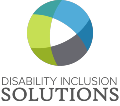Dexterity is defined as a person’s ability to perform specific motor tasks. Many medical conditions, injuries, and disabilities can affect a person’s dexterity, including:
- cumulative trauma disorders
- multiple sclerosis
- cerebral palsy
- arthritis
- diabetes
- stroke
- and general injuries
When a person has dexterity limitations, it affects their ability to use their arms, hands, and fingers. It also reduces their ability to lift, reach, bend, or carry.
People with dexterity disabilities may have little or no motor control, but there are a range of devices and accommodations that can help them adapt.
The iDisability™ training module, “Accommodating Individuals with Limited Physical Dexterity” provides accommodation solutions to improve worksite accessibility. These solutions allow employees with dexterity limitations to be more effective in the workplace, maintain independence, and develop an increased ability to perform manual skills and daily tasks.
It is important to let employees and applicants know your company is prepared to make accommodations that allow everyone to successfully perform their duties. This is a signal that the workplace values employees with disabilities and diversity in the workforce.
With 37 distinctly different and practical modules, the iDisability™ e-learning platform has already helped train and educate nearly 2 million business users across a variety of industries. We’re confident the technology can also get your team up to speed on many different work-related disability inclusion topics. Complete the contact form and allow us to help your organization succeed in its disability inclusion training and development.





0 Comments